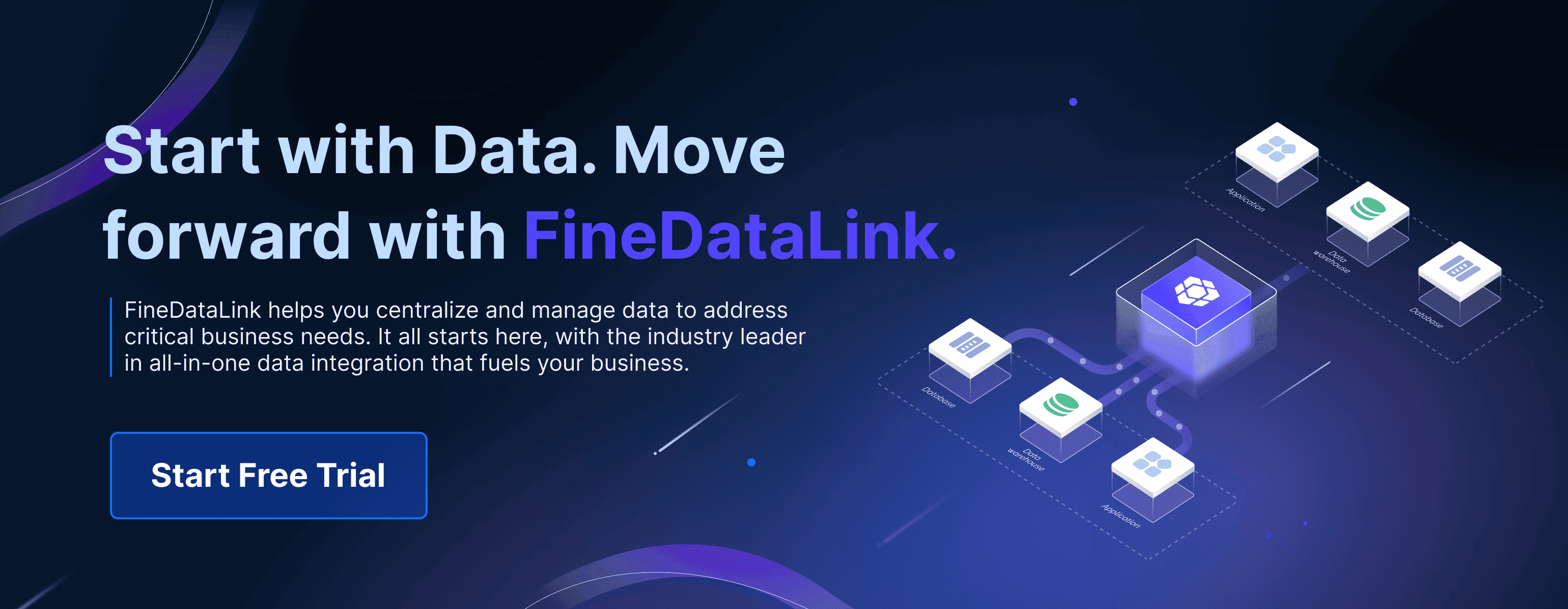Data integration techniques play a crucial role in modern data management. They combine data from various sources to create a unified view, which enhances business efficiency and decision-making. In today's data-driven world, 80% of business operations leaders consider these techniques essential for success. Unified data leads to better strategic decisions and generates value. FanRuan stands out as a leader in this field, offering innovative solutions like FineDataLink and FineBI. These tools empower businesses to harness the full potential of their data, driving informed decisions and strategic growth.

What are Data Integration Techniques?
Definition and Explanation of Data Integration Techniques
Data integration techniques serve as methods to combine data from various sources into a single, unified view. These techniques streamline the process of gathering data from different formats and systems, ensuring consistency and accessibility. By integrating data, organizations can eliminate data silos, which often hinder data quality and decision-making processes. This unified approach allows businesses to automate data processes, reducing manual data entry and enhancing operational efficiency.
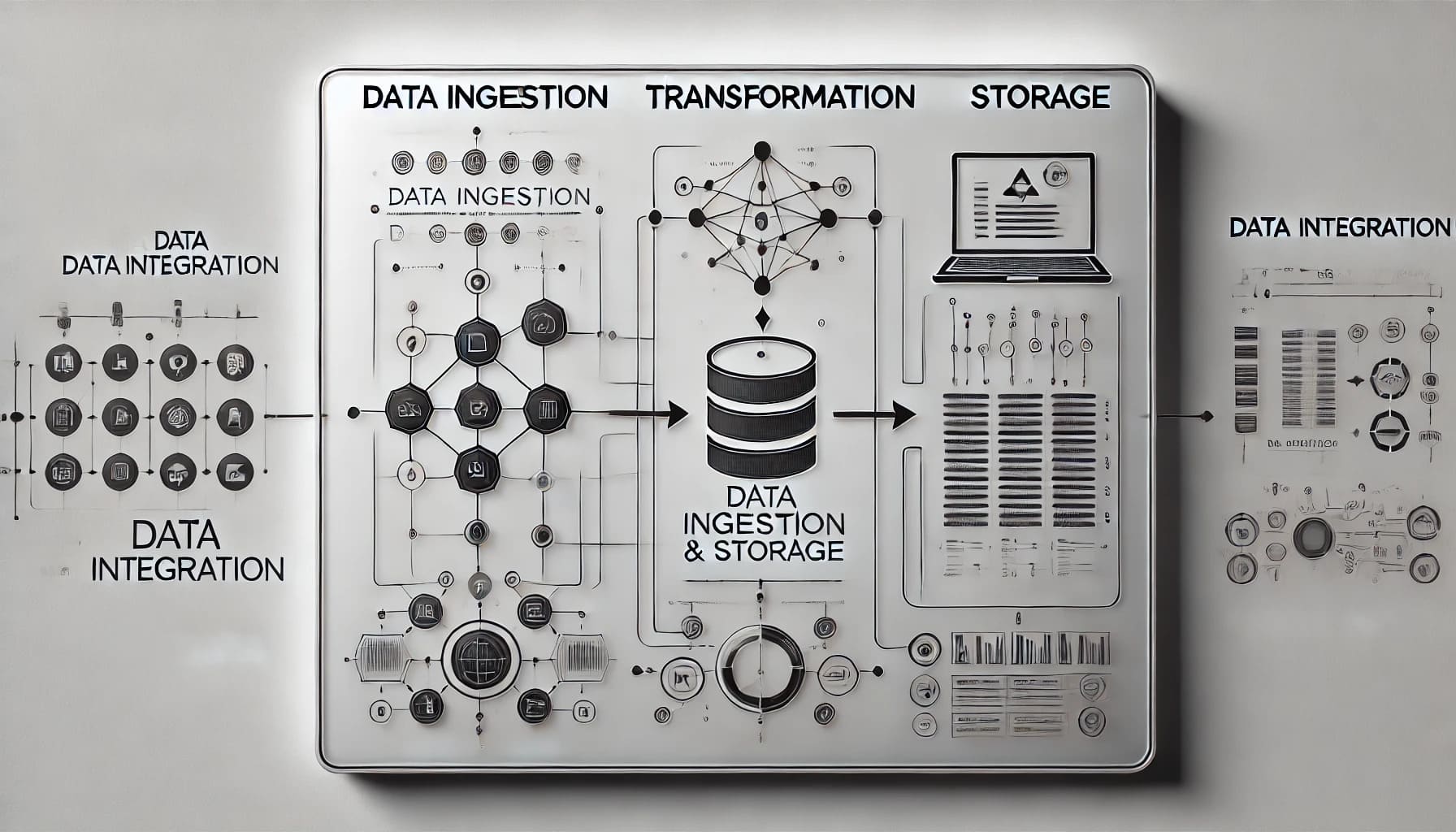
Importance in Today's Data-Driven World
In today's data-driven world, data integration holds immense importance. It provides a centralized solution to data fragmentation, enabling better decision-making and collaboration. With the rise of big data technologies, the demand for effective data integration has surged. Organizations now rely on these techniques to support accurate decision-making and enhance collaboration across departments.
Data integration tools, such as ETL (Extract, Transform, Load) and ELT (Extract, Load, Transform), automate data ingestion, transformation, and loading. They connect to various data sources, loading data into a central repository. This automation not only improves efficiency but also ensures that data sharing between systems flows effortlessly.
FineDataLink, a leader in data integration solutions, plays a pivotal role in ensuring relevant data integration and accessibility across different systems. By enhancing the reliability and depth of analysis, FineDataLink empowers businesses to harness the full potential of their data. This capability is crucial for organizations aiming to thrive in a competitive, data-centric environment.

Data Integration Techniques
ETL (Extract, Transform, Load)
ETL stands as a cornerstone in data integration techniques. It involves three primary steps: extracting data from various sources, transforming it into a suitable format, and loading it into a target system, typically a data warehouse. This method ensures that data is clean, consistent, and ready for analysis.
How ETL Works
- Extraction: ETL begins by pulling data from multiple sources, such as databases, CRM systems, or flat files. This step gathers raw data, which may vary in format and structure.
- Transformation: The extracted data undergoes transformation to meet the requirements of the target system. This process includes cleaning, filtering, and aggregating data to ensure consistency and accuracy.
- Loading: Finally, the transformed data is loaded into a data warehouse or another target system. This step makes the data available for analysis and reporting.
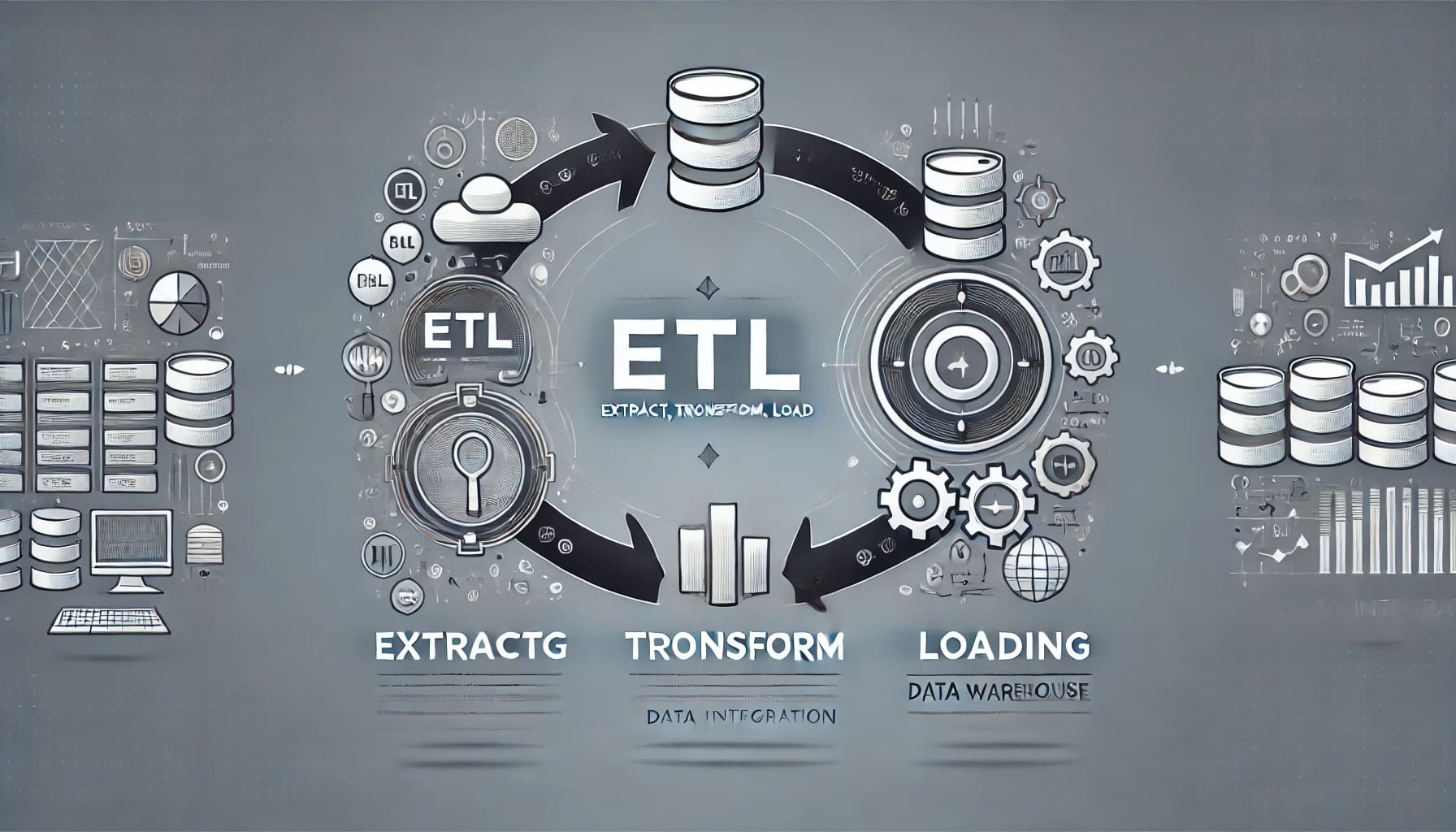
Pros and Cons of ETL
Pros:
- ETL provides a structured approach to data integration, ensuring data consistency and quality .
- It is ideal for complex transformations and smaller data sets, prioritizing data security.
Cons:
- ETL can be time-consuming, especially when dealing with large volumes of data.
- It may require significant resources for data transformation before loading.
ELT (Extract, Load, Transform)
ELT offers a modern twist on traditional data integration techniques. Unlike ETL, ELT loads data into the target system first and then performs transformations. This approach leverages the processing power of the data warehouse, making it suitable for handling large data sets.
How ELT Differs from ETL
- Data Transformation Timing: ELT transforms data after loading, while ETL does so before loading.
- Flexibility: ELT provides more flexibility, allowing analysts to work with both structured and unstructured data.
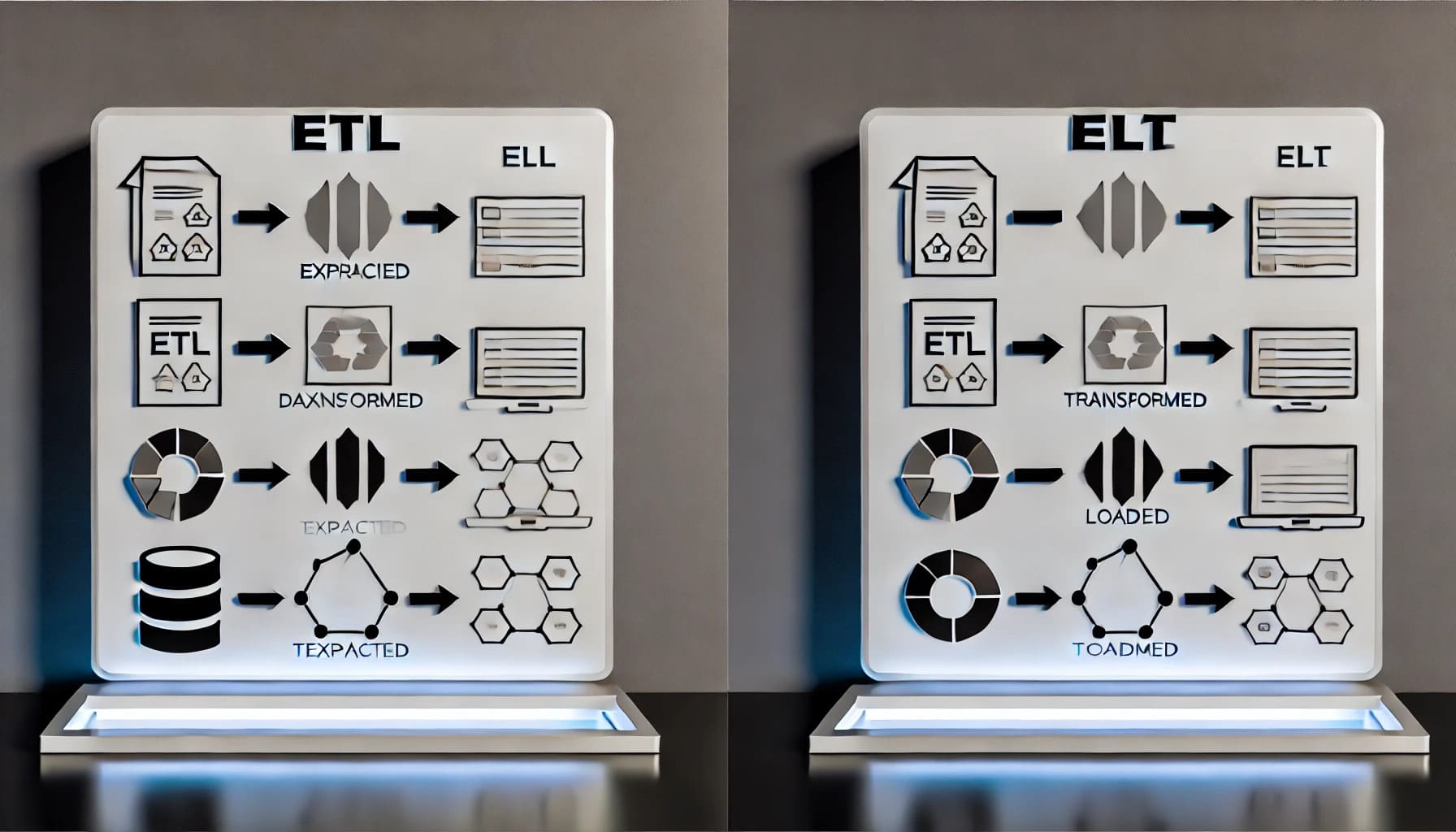
Advantages and Disadvantages
Advantages:
- ELT is faster and more efficient for large data sets, as it utilizes the data warehouse's capabilities.
- It keeps raw data available for future analysis, offering more flexibility.
Disadvantages:
- ELT may require more storage space, as raw data is loaded before transformation.
- It might not be as cost-effective as ETL for smaller data sets.
Data Streaming
Data streaming represents a dynamic approach to data integration techniques, enabling real-time data processing. This method allows continuous data flow from source to destination, facilitating immediate analytics and decision-making.

Real-Time Data Processing
Data streaming processes data in real-time, capturing and analyzing information as it arrives. This capability is crucial for applications requiring instant insights, such as fraud detection or live monitoring systems.
Use Cases and Limitations
Use Cases:
- Real-time analytics in financial services for detecting fraudulent transactions.
- Monitoring and analyzing social media feeds for sentiment analysis.
Limitations:
- Data streaming may require robust infrastructure to handle high data velocity.
- It can be challenging to ensure data consistency and accuracy in real-time environments.
Application Integration
Application integration serves as a vital component in data integration techniques. It enables different software applications to communicate and work together seamlessly. This interoperability ensures that data flows smoothly between systems, enhancing operational efficiency.

Enabling Interoperability
Application integration breaks down barriers between disparate systems. By allowing applications to exchange data, it creates a cohesive environment where information is readily accessible. This process often involves using middleware, which acts as a bridge to facilitate communication between different software platforms. Middleware ensures that data is transferred accurately and efficiently, reducing the risk of errors and data loss.
Benefits and Challenges
Benefits:
- Enhanced Efficiency: Application integration streamlines workflows by automating data exchange between systems. This automation reduces manual data entry, saving time and minimizing errors.
- Improved Collaboration: By providing a unified view of data, application integration fosters better collaboration across departments. Teams can access the same information, leading to more informed decision-making.
- Scalability: As organizations grow, application integration supports scalability by allowing new applications to be added without disrupting existing systems.
Challenges:
- Complexity: Integrating multiple applications can be complex, requiring careful planning and execution. Organizations must ensure that all systems are compatible and that data is synchronized correctly.
- Security Risks: Data exchange between applications can expose sensitive information to security threats. Implementing robust security measures is essential to protect data integrity and privacy.
Data Virtualization
Data virtualization offers a modern approach to data integration techniques by allowing users to access and manipulate data without physically moving it. This technique creates a virtual layer that provides a unified view of data from multiple sources.

Accessing Data Without Physical Movement
Data virtualization eliminates the need for data replication. Instead, it provides real-time access to data, regardless of its location. Users can query and analyze data as if it were stored in a single repository, even though it remains in its original source. This approach enhances data accessibility and reduces storage costs.
Pros and Cons
Pros:
- Real-Time Access: Data virtualization enables real-time data access, allowing users to make timely decisions based on the most current information.
- Cost-Effective: By eliminating the need for data replication, data virtualization reduces storage and maintenance costs.
- Flexibility: Users can access data from various sources without worrying about compatibility issues, making it easier to integrate new data sources.
Cons:
- Performance Limitations: While data virtualization provides real-time access, it may face performance challenges when dealing with large data volumes or complex queries.
- Dependency on Source Systems: Since data remains in its original source, any issues with the source system can impact data reliability and availability.
Applications of Data Integration Techniques
Data integration techniques have become indispensable in modern business operations. They streamline processes, enhance data accessibility, and improve decision-making. Below are some key applications of these techniques:
Data Ingestion
Data ingestion involves collecting and importing data from various sources into a centralized system for further processing and analysis. This process ensures that data is readily available for business intelligence and analytics. Companies use data ingestion to gather information from diverse formats, such as databases, spreadsheets, and cloud services. By automating data ingestion, businesses can reduce manual data entry, minimize errors, and ensure that data is up-to-date.
Key Benefits of Data Ingestion:
- Efficiency: Automates the collection of data, saving time and resources.
- Accuracy: Reduces human error by minimizing manual data handling.
- Timeliness: Ensures that data is current and readily available for analysis.
Data Replication
Data replication involves copying data from one location to another to ensure consistency and reliability. This technique is crucial for disaster recovery, backup, and maintaining data integrity across multiple systems. By replicating data, organizations can safeguard against data loss and ensure that critical information is always accessible.
Advantages of Data Replication:
- Reliability: Provides a backup in case of system failures or data corruption.
- Consistency: Ensures that data remains consistent across different platforms.
- Accessibility: Allows access to data from multiple locations, enhancing collaboration.
Big Data Integration
Big data integration focuses on combining large volumes of data from various sources to create a comprehensive view. This approach is essential for organizations dealing with massive datasets, such as those generated by IoT devices, social media, and transactional systems. By integrating big data, businesses can gain valuable insights, identify trends, and make informed decisions.
Impact of Big Data Integration:
- Enhanced Analytics: Provides a holistic view of data, enabling advanced analytics and machine learning applications.
- Informed Decision-Making: Offers insights that drive strategic business decisions.
- Competitive Advantage: Allows organizations to stay ahead by leveraging data-driven insights.
Data integration techniques, including data ingestion, replication, and big data integration, play a pivotal role in transforming business operations. They enable organizations to harness the power of data, driving efficiency and innovation.
FineDataLink's Role in Real-Time Data Synchronization
FineDataLink plays a pivotal role in real-time data synchronization, a crucial aspect of modern data integration techniques. This platform enables businesses to synchronize data across multiple systems with minimal latency, ensuring that information remains current and accessible. By facilitating seamless data flow, FineDataLink enhances operational efficiency and decision-making.
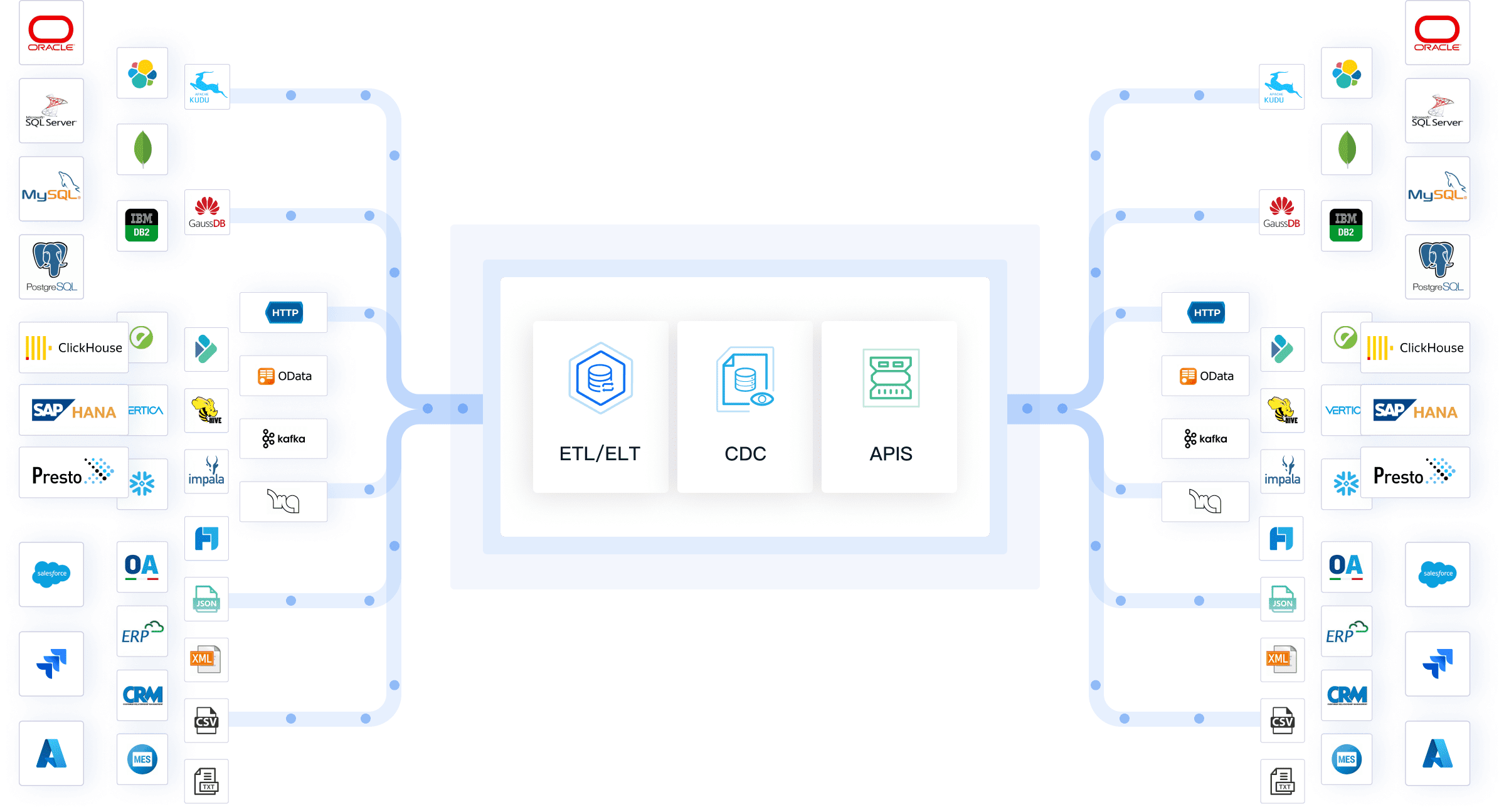
Key Features of FineDataLink:
- Real-Time Synchronization: FineDataLink excels in synchronizing data in real-time, which is essential for applications requiring immediate data updates. This capability supports various business functions, such as inventory management and customer relationship management, where timely data access is critical.
- Low-Code Platform: The platform's low-code approach simplifies the integration process. Users can easily set up data pipelines without extensive coding knowledge, making it accessible to a broader range of users. This feature reduces the time and effort required for data integration, allowing businesses to focus on strategic initiatives.
- Support for Diverse Data Sources: FineDataLink supports over 100 common data sources, including databases, cloud services, and SaaS applications. This wide range of compatibility ensures that businesses can integrate data from various platforms, creating a unified view of their operations.
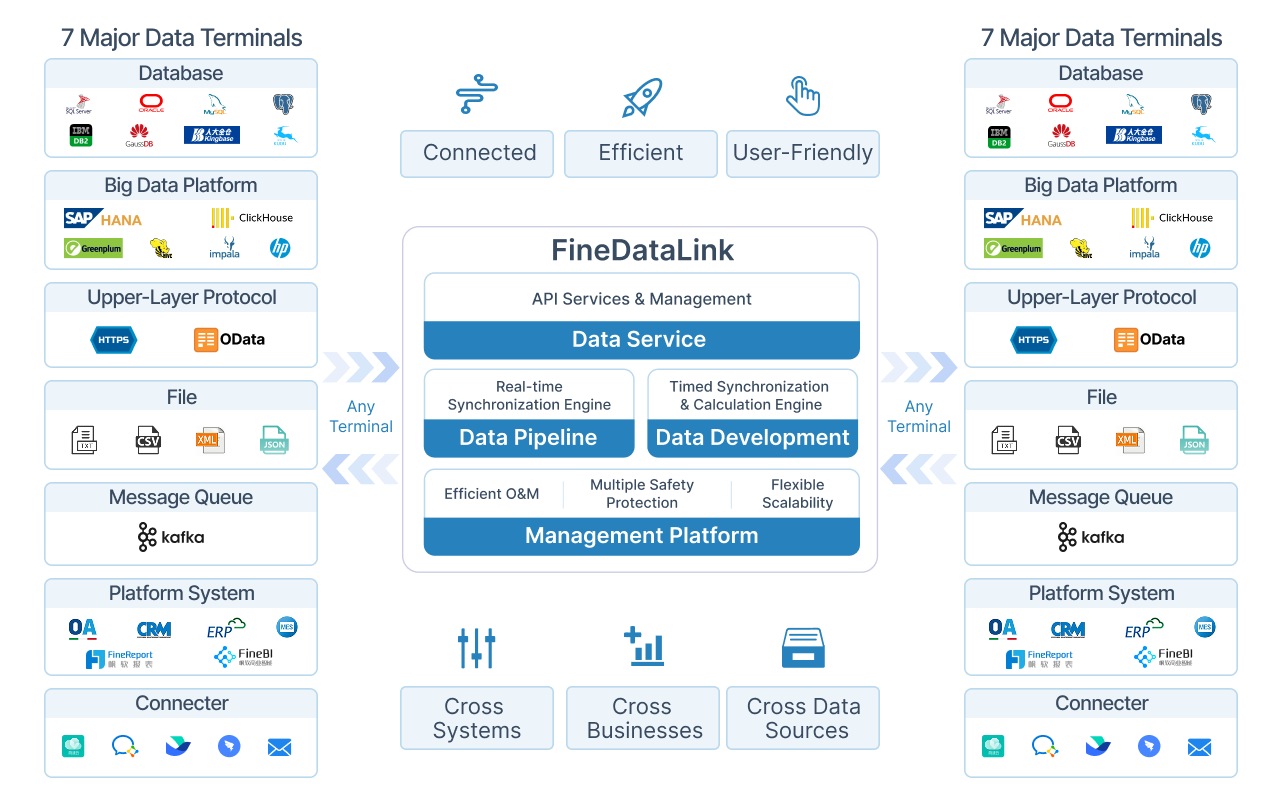
Benefits of Using FineDataLink:
- Enhanced Efficiency: By automating data synchronization, FineDataLink reduces manual data handling, minimizing errors and saving time. This automation streamlines workflows, allowing employees to concentrate on more value-added tasks.
- Improved Data Quality: Real-time synchronization ensures that data remains consistent and accurate across all systems. This consistency enhances data quality, which is vital for reliable analytics and reporting.
- Scalability: As businesses grow, FineDataLink scales to accommodate increasing data volumes and complexity. Its robust infrastructure supports large-scale data integration, ensuring that organizations can continue to operate efficiently as they expand.
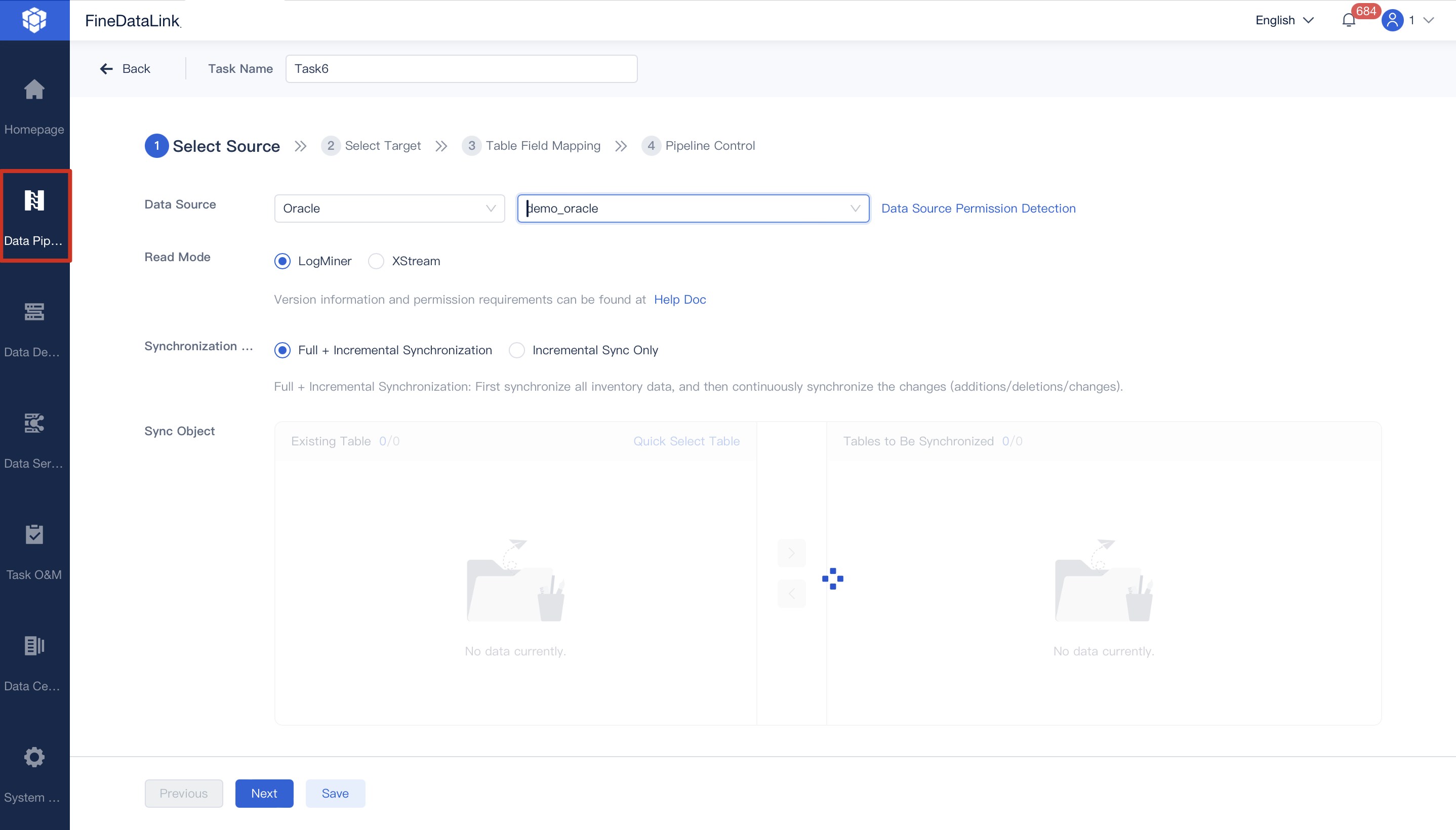
Case Study: Transforming Operations with FineDataLink
A leading retail company implemented FineDataLink to synchronize inventory data across its network of stores. By doing so, the company achieved real-time visibility into stock levels, enabling better inventory management and reducing stockouts. This transformation led to increased customer satisfaction and improved sales performance.
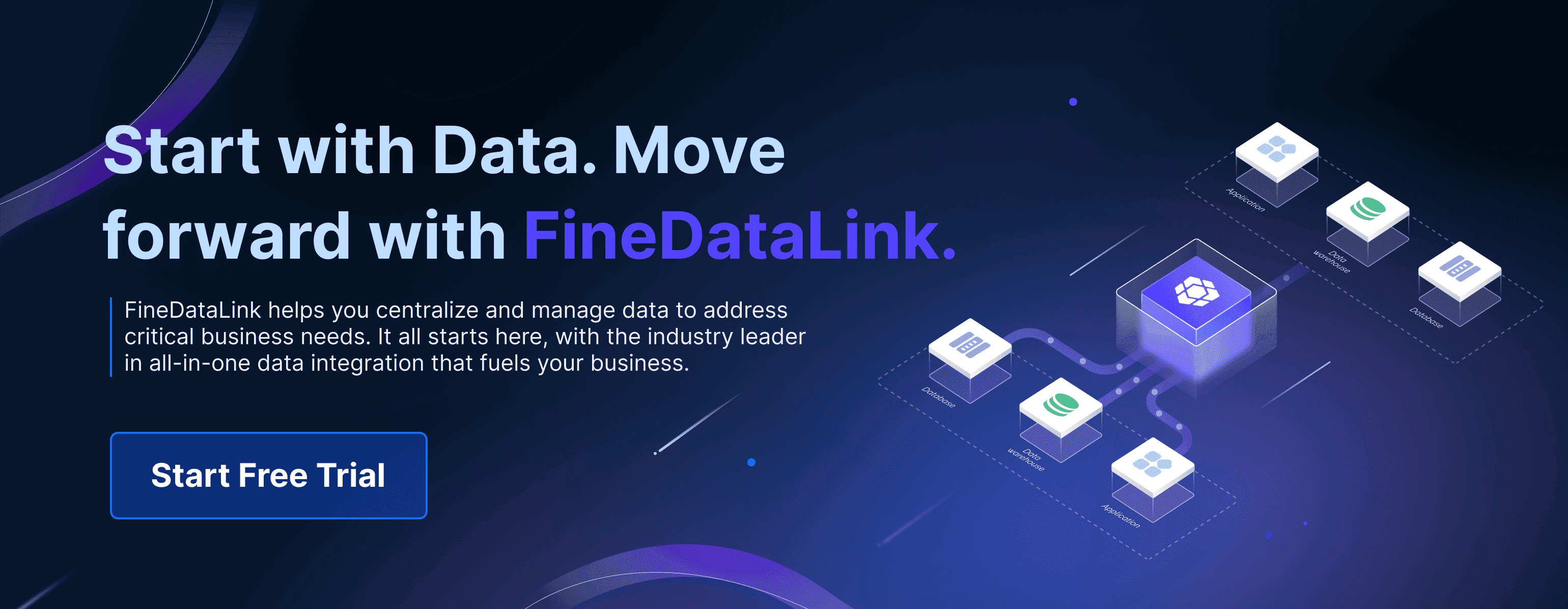
Challenges in Data Integration Techniques
Data integration techniques offer numerous benefits, but they also present several challenges that organizations must address to ensure successful implementation.

Data Quality Issues
Data quality remains a significant challenge in data integration. Organizations often deal with data from various sources, each with its own format and standards. This diversity can lead to inconsistencies, inaccuracies, and duplications. Ensuring high data quality requires rigorous validation and cleansing processes. For instance, a company might implement automated checks to identify and correct errors before data enters the system. By maintaining transparency and regularly updating stakeholders, businesses can improve data quality and build trust in their data-driven decisions.
Scalability Concerns
Scalability poses another challenge in data integration. As organizations grow, the volume of data increases, requiring systems that can handle larger datasets efficiently. Traditional data integration methods may struggle with scalability, leading to performance bottlenecks. Companies must invest in scalable solutions that can adapt to growing data demands. For example, adopting cloud-based platforms can provide the necessary flexibility and resources to manage expanding data volumes. By planning for scalability from the outset, businesses can avoid disruptions and maintain seamless data integration.
Security and Privacy Risks
Security and privacy risks are critical concerns in data integration. Integrating data from multiple sources increases the potential for unauthorized access and data breaches. Organizations must implement robust security measures to protect sensitive information. This includes encryption, access controls, and regular security audits. Additionally, compliance with data protection regulations, such as GDPR, is essential to safeguard privacy. By prioritizing security and privacy, companies can mitigate risks and ensure the integrity of their data integration processes.
Benefits of Effective Data Integration Techniques
Improved Decision Making
Effective data integration techniques significantly enhance decision-making processes. By providing a unified view of data, organizations can access comprehensive insights that drive informed decisions. When data from various sources converges into a single repository, decision-makers gain a holistic understanding of business operations. This clarity enables them to identify trends, forecast outcomes, and strategize effectively.
FineDataLink plays a crucial role in this process. Its real-time data synchronization ensures that decision-makers always work with the most current data. This capability is vital for businesses that rely on timely information to make strategic choices. By automating data standardization and transformation, FineDataLink maintains high data quality, further supporting accurate decision-making.
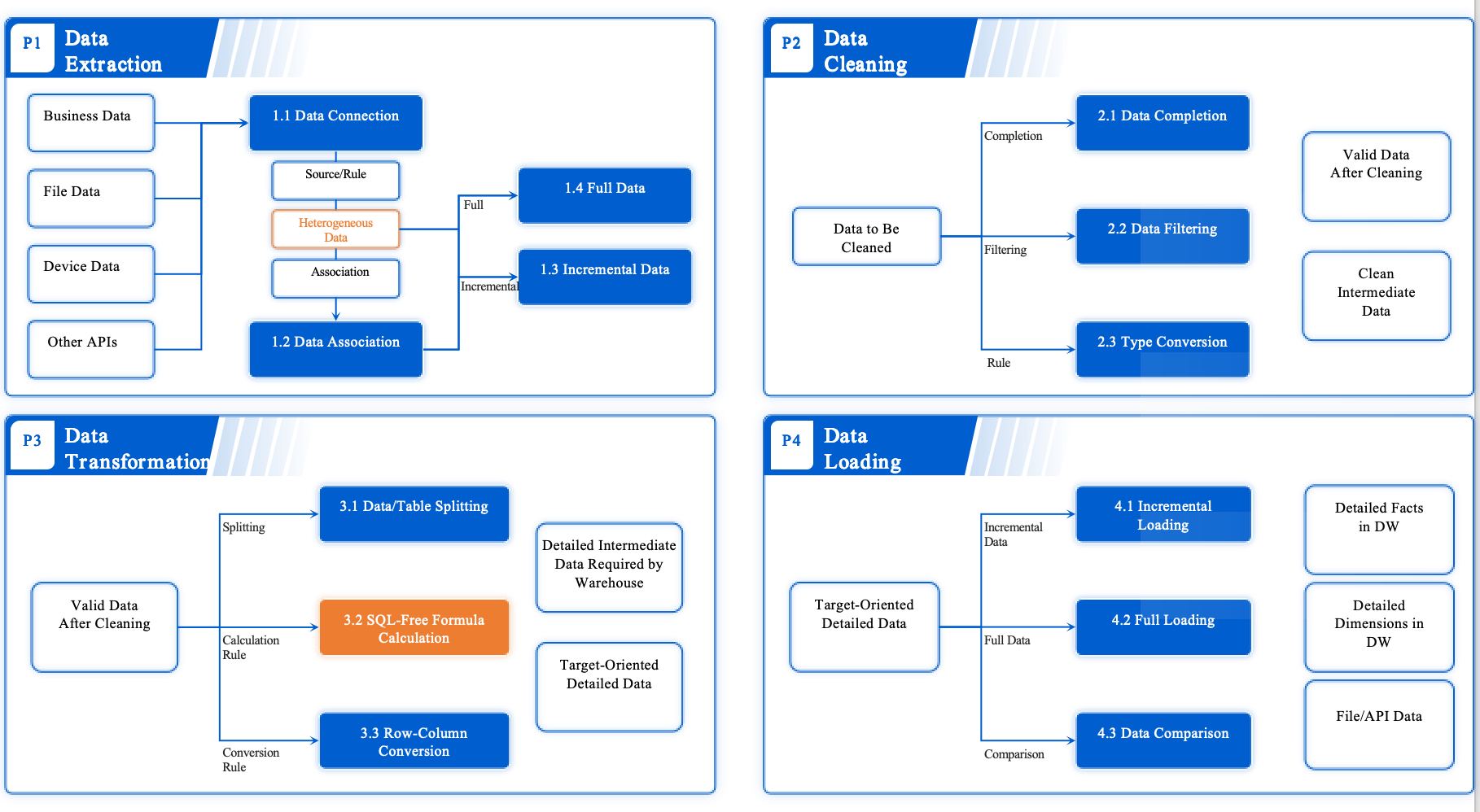
Enhanced Data Accessibility
Data integration techniques improve data accessibility across an organization. When data resides in silos, accessing it becomes challenging and time-consuming. Integration breaks down these barriers, allowing seamless access to information. Employees can retrieve data quickly, regardless of its original source, which enhances productivity and collaboration.
FineDataLink excels in supporting multiple data sources, ensuring that users can access diverse datasets effortlessly. Its robust data transformation capabilities streamline the normalization process, making data more accessible and usable. This accessibility empowers teams to collaborate effectively, as they can share and analyze data without technical hindrances.
Streamlined Business Processes
Streamlining business processes is another significant benefit of data integration techniques. By automating data flows, organizations reduce manual data entry and minimize errors. This automation leads to more efficient workflows, saving time and resources. Employees can focus on value-added tasks rather than repetitive data handling.
FineDataLink offers powerful tools to automate and streamline data processes. Its low-latency real-time synchronization supports database migration and backup, ensuring that data remains consistent across systems. This consistency is crucial for maintaining smooth operations and avoiding disruptions. By leveraging FineDataLink's capabilities, businesses can optimize their processes and enhance overall efficiency.
How FineBI Enhances Data Analysis Efficiency
FineBI stands out as a powerful tool in enhancing data analysis efficiency. It empowers users by transforming raw data into insightful visualizations, which aids in tracking key performance indicators (KPIs), identifying trends, and predicting future outcomes. This transformation process is crucial for organizations aiming to make informed decisions based on comprehensive data insights.

- High-Performance Computing Engine: FineBI utilizes a high-performance computing engine capable of processing massive datasets. This capability ensures that users can analyze large volumes of data quickly and efficiently, supporting over 10,000 users for online viewing. The engine's speed and capacity make it ideal for enterprise-level applications where timely data analysis is critical.
- Flexible ETL and ELT Data Processing: FineBI offers flexible ETL (Extract, Transform, Load) and ELT (Extract, Load, Transform) data processing modes. These modes allow users to preprocess and transform data according to their specific needs. By providing visual data development tools, FineBI simplifies complex data integration tasks, making it accessible to users with varying levels of technical expertise.
- Augmented Analytics: FineBI incorporates augmented analytics, which enhances data interpretation through interactive analysis. Users can generate automatic analysis for selected data, enabling them to explore data more deeply and uncover valuable insights. This feature democratizes data analysis, allowing even non-technical users to leverage data effectively.
- Real-Time Analysis: Real-time analysis is a standout feature of FineBI. It allows users to conduct analysis instantly after data updates, ensuring that decision-makers always have access to the most current information. This capability is essential for businesses that rely on up-to-date data to respond swiftly to market changes and operational demands.
- Role-Based Access Control: FineBI supports role-based access control, which ensures data security and privacy. Users can assign report usage permissions based on roles and responsibilities, down to the granularity of data rows and columns. This control mechanism protects sensitive information while allowing authorized users to access the data they need for analysis.
"FineBI transforms raw data into actionable insights, helping organizations improve decision-making and business performance across various sectors."
By integrating these features, FineBI significantly enhances data analysis efficiency. It provides a comprehensive platform that supports diverse data sources, facilitates real-time analysis, and empowers users to make data-driven decisions confidently. Organizations leveraging FineBI can streamline their data processes, improve collaboration, and gain a competitive edge in their respective industries.
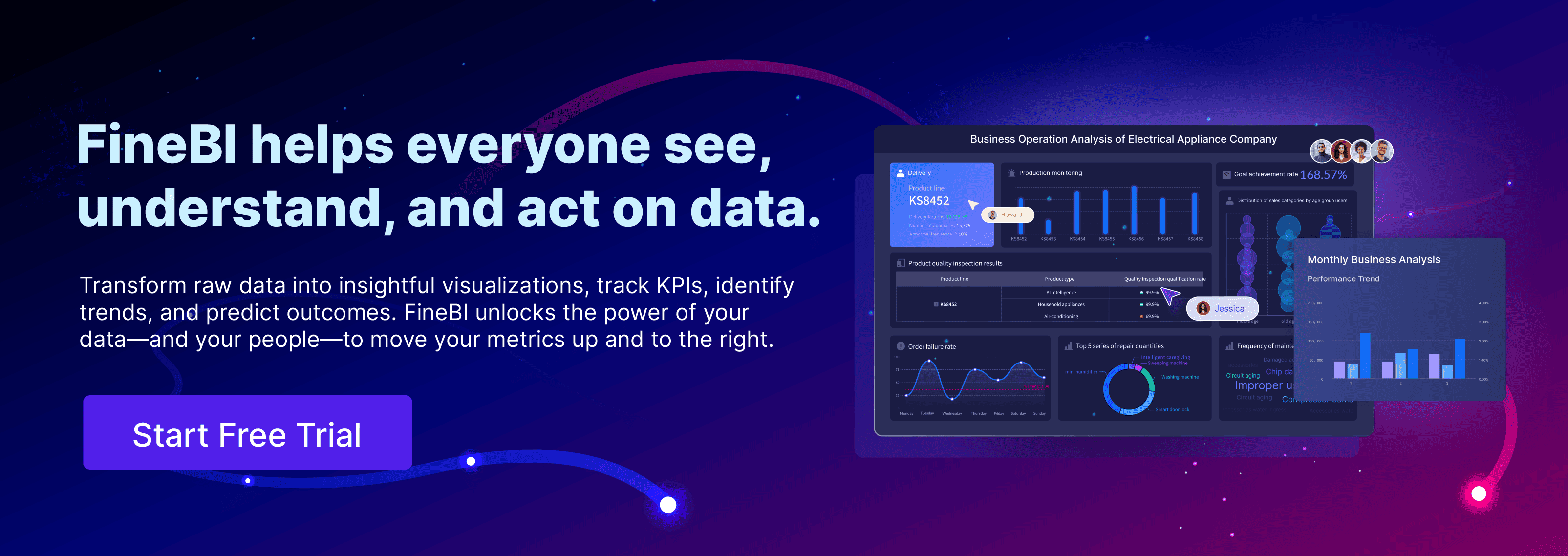
Best Practices for Implementing Data Integration Techniques
Implementing data integration techniques effectively requires careful planning and execution. Organizations must consider several best practices to ensure successful integration and maximize the benefits of unified data.
Choosing the Right Technique
Selecting the appropriate data integration technique is crucial for achieving desired outcomes. Organizations should evaluate their specific needs and data characteristics before deciding on a method. For instance, ETL (Extract, Transform, Load) suits scenarios where data requires significant transformation before analysis. Conversely, ELT (Extract, Load, Transform) is ideal for handling large datasets with minimal initial transformation. Data streaming works best for real-time analytics, while data virtualization offers flexibility without physical data movement.
Key Considerations:
- Data Volume and Velocity: Assess the size and speed of data flow to determine the most efficient technique.
- Transformation Needs: Identify the extent of data transformation required to meet business objectives.
- Real-Time Requirements: Consider whether real-time data processing is necessary for your operations.
Ensuring Data Quality
Maintaining high data quality is essential for reliable data integration. Organizations must implement rigorous validation and cleansing processes to address inconsistencies and inaccuracies. Data quality issues often arise from heterogeneous data formats and inconsistent definitions. Automated checks can help identify and correct errors before data enters the system.
Strategies for Ensuring Data Quality:
- Data Profiling: Regularly analyze data to detect anomalies and inconsistencies.
- Standardization: Establish uniform data formats and definitions across all sources.
- Cleansing: Implement automated tools to clean and validate data before integration.
Maintaining Security and Compliance
Security and compliance are paramount in data integration. Organizations must protect sensitive information from unauthorized access and ensure compliance with industry regulations. Strong security measures, such as encryption and access controls, are vital throughout the integration process. Regular security audits help identify vulnerabilities and maintain data integrity.
Security Best Practices:
- Encryption: Use encryption to safeguard data during transmission and storage.
- Access Controls: Implement role-based access controls to restrict data access to authorized personnel.
- Compliance: Ensure adherence to relevant data protection regulations, such as GDPR or HIPAA.
By following these best practices, organizations can effectively implement data integration techniques, ensuring data quality, security, and compliance. These measures not only enhance operational efficiency but also support informed decision-making and strategic growth.
Leveraging FineDataLink for Seamless Integration
FineDataLink stands out as a robust solution for achieving seamless data integration across various platforms. It addresses common challenges in data integration, such as handling heterogeneous data formats and managing large data volumes. By providing a unified platform, FineDataLink ensures compatibility across different data types and connectors, streamlining workflows and enhancing operational efficiency.
Key Features of FineDataLink:
- Real-Time Synchronization: FineDataLink excels in synchronizing data across multiple systems with minimal latency. This feature is crucial for businesses that require up-to-date information for decision-making. Real-time synchronization supports various applications, including inventory management and customer relationship management, where timely data access is essential.
- Low-Code Platform: The platform's low-code approach simplifies the integration process. Users can set up data pipelines without extensive coding knowledge, making it accessible to a broader range of users. This feature reduces the time and effort required for data integration, allowing businesses to focus on strategic initiatives.
- Support for Diverse Data Sources: FineDataLink supports over 100 common data sources, including databases, cloud services, and SaaS applications. This wide range of compatibility ensures that businesses can integrate data from various platforms, creating a unified view of their operations.
Benefits of Using FineDataLink:
- Enhanced Efficiency: Automating data synchronization with FineDataLink reduces manual data handling, minimizing errors and saving time. This automation streamlines workflows, allowing employees to concentrate on more value-added tasks.
- Improved Data Quality: Real-time synchronization ensures that data remains consistent and accurate across all systems. This consistency enhances data quality, which is vital for reliable analytics and reporting.
- Scalability: As businesses grow, FineDataLink scales to accommodate increasing data volumes and complexity. Its robust infrastructure supports large-scale data integration, ensuring that organizations can continue to operate efficiently as they expand.
Case Study: Transforming Operations with FineDataLink
A leading retail company implemented FineDataLink to synchronize inventory data across its network of stores. By doing so, the company achieved real-time visibility into stock levels, enabling better inventory management and reducing stockouts. This transformation led to increased customer satisfaction and improved sales performance.
"Data integration solutions allow for real-time analysis of diverse data sets, uncovering outliers that signal potential fraud."
FineDataLink's ability to provide seamless integration and real-time data access makes it an invaluable tool for businesses aiming to thrive in a data-driven economy. By leveraging its capabilities, organizations can overcome common data integration challenges and unlock the full potential of their data assets.
Understanding and implementing data integration techniques is crucial for modern businesses. These techniques streamline data processes, leading to improved decision-making and operational efficiency. Adopting best practices ensures successful integration, enhancing data quality and security. Effective data integration can transform business outcomes, offering a competitive edge. Companies should explore FanRuan's solutions, like FineBI, which deliver actionable insights and create comprehensive data analytics platforms. These tools empower organizations to harness their data's full potential, driving strategic growth and innovation.
Click the banner below to experience FineBI for free and empower your enterprise to convert data into productivity!
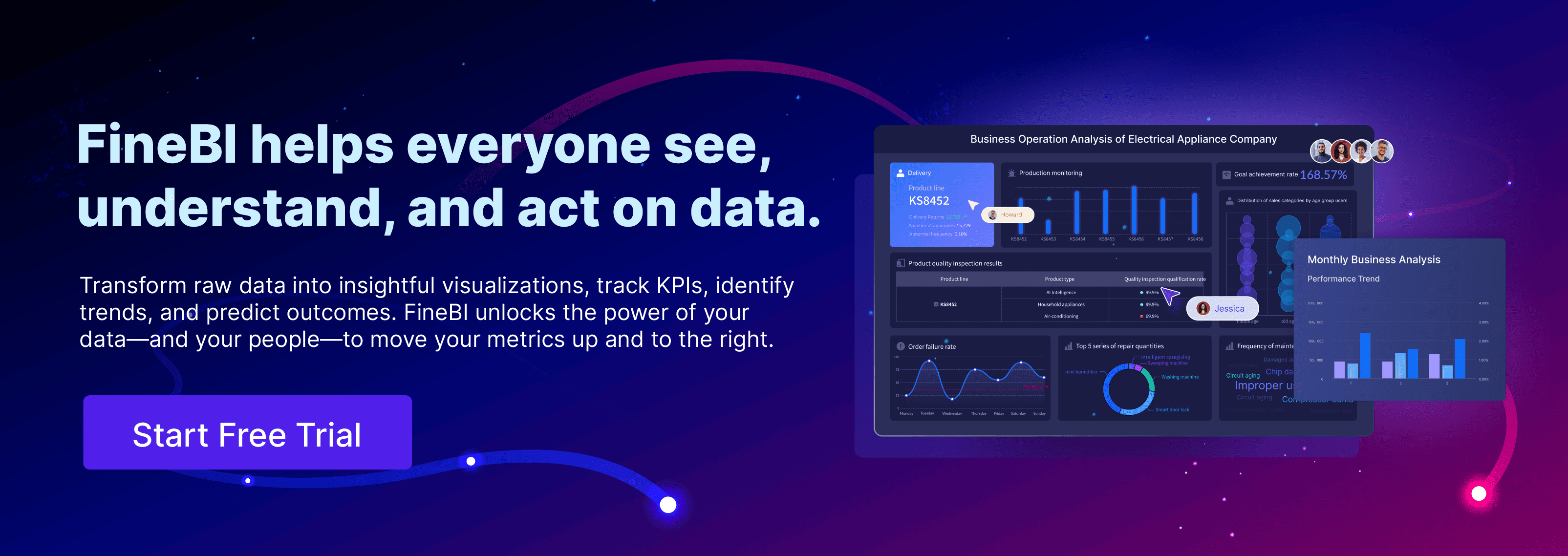
Continue Reading about Data Integration
Essential Data Integration: A Beginner's Guide
Top Data Integration Tools: 2025 Guide
Top 10 Data Integration Software for 2025
What is API Data Integration? API vs Data Integration
Best Data Integration Platforms to Use in 2025
Enterprise Data Integration: A Comprehensive Guide
Top 7 Data Integration Patterns for Modern Enterprises
Steps to Become a Data Integration Specialist
Exploring SAP Data Integration Tools and Their Functions
FAQ

The Author
Howard
Data Management Engineer & Data Research Expert at FanRuan
Related Articles

10 Best Data Orchestration Tools for 2025 You Should Know
Compare the best data orchestration tools for 2025 to streamline workflows, boost automation, and improve data integration for your business.
Howard
Nov 28, 2025

10 Best Enterprise ETL Tools for Data Integration
Compare the 10 best enterprise ETL tools for data integration in 2025 to streamline workflows, boost analytics, and support scalable business growth.
Howard
Oct 02, 2025

What is Real Time Data Integration and Why It Matters
Real time data integration connects systems for instant, accurate data access, enabling faster decisions, improved efficiency, and better customer experiences.
Howard
Sep 24, 2025
